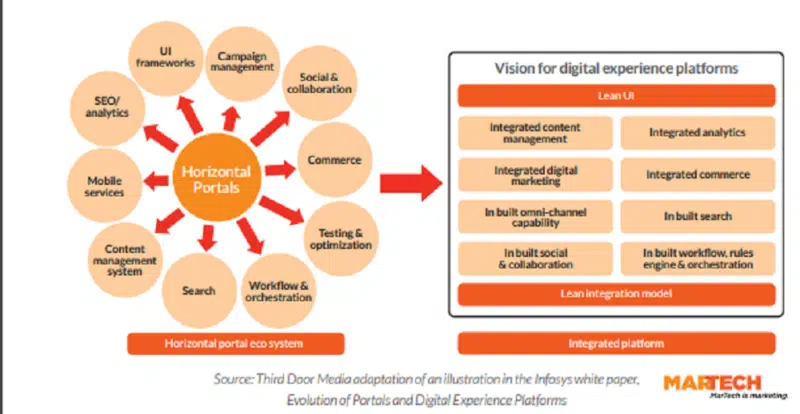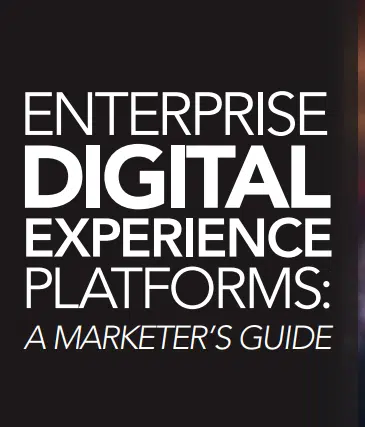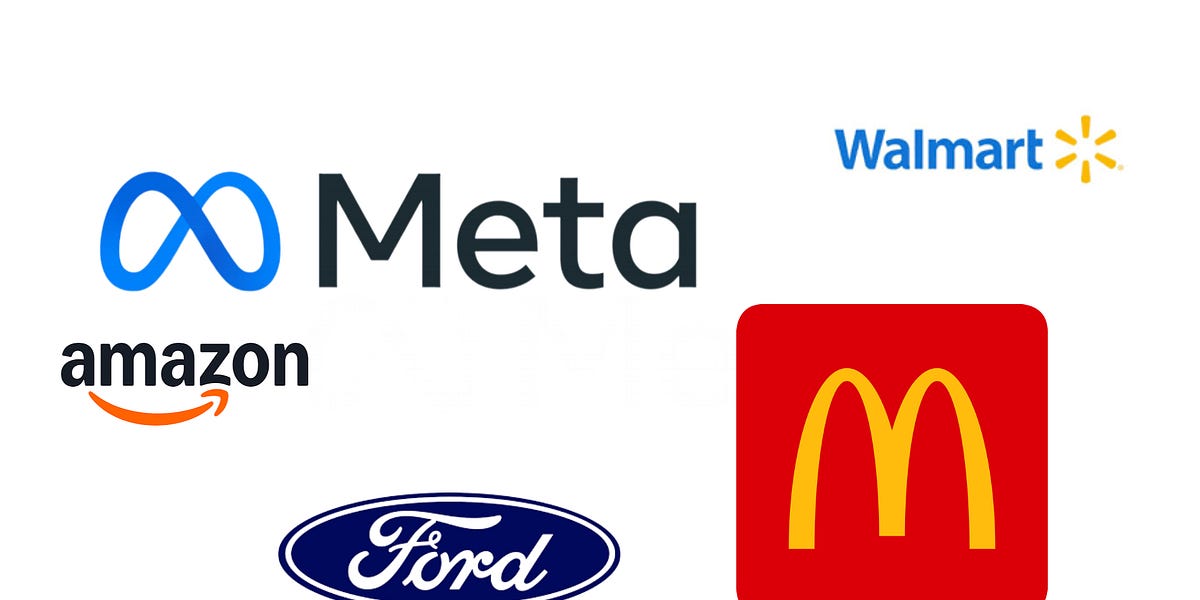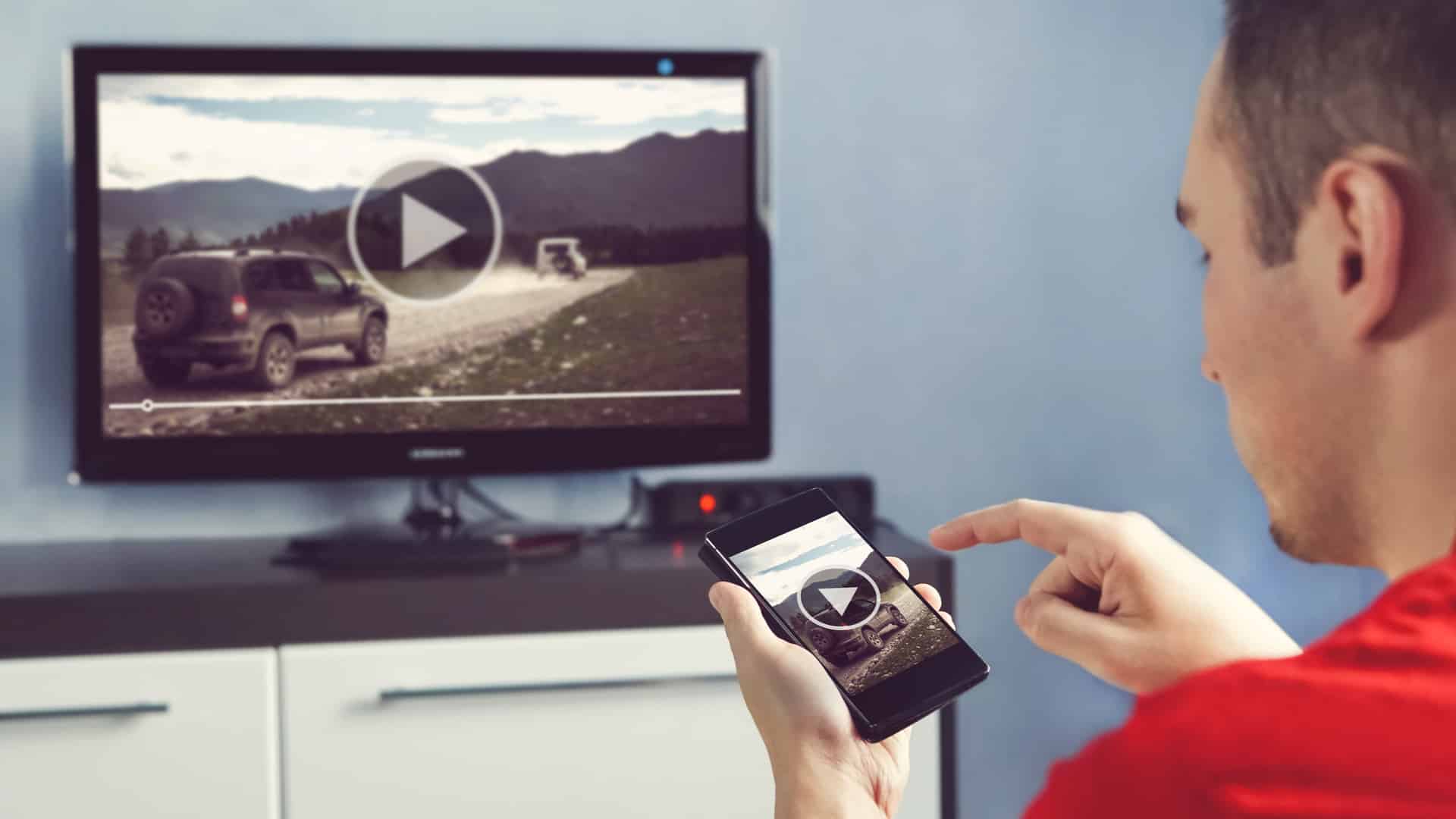
The core capability of the digital experience platform is managing and delivering the digital user experience — primarily web pages, but also mobile apps and other types of content — a need that has long been served by content management systems.
While the growth of content management systems (CMSs) has allowed marketers to wrest control of websites from the IT department, which was largely in charge of the early web, marketers’ needs have grown beyond CMSs’ abilities to meet them in recent years.
Digital transformation drives tool adoption
Over time, businesses have undergone digital transformations to drive efficiencies, remain competitive in the marketplace and respond to changes in customer behavior. To perform everything expected of a modern marketing operation, marketers adopted adjacent technologies to enhance what their CMS was able to do.
- Web analytics helped marketers gather data about user behavior and the conversion funnel, with more sophisticated optimization systems allowing for A/B and multivariate testing.
- Customer journey analytics (CJA) gave marketers a more sophisticated sense of the path users take on the route to purchase.
- For many businesses, ecommerce capabilities became essential to their digital operations.
- Connecting all the data in these systems to the right customer or prospect and keeping track of it all required a customer relationship management (CRM) tool or even a customer data platform (CDP).
Though each of these technologies provides a way to improve the user experience and helps modern marketers meet the demands now placed on them, this hodgepodge of systems has increasingly become a liability. In some cases, marketers are weighed down by the costs of licensing all of these disparate systems.
Enter the DXP
These challenges, along with developments like the increased digitization of business brought about by the COVID pandemic and ever-heightened customer expectations, are some of the factors that have led to the rise of the digital experience platform (DXP).
Customers increasingly expect marketers to deliver consistent, personalized experiences to all of their devices, and they often use multiple devices to interact with brands and complete transactions.
Just delivering appropriate content to all of these channels and devices is a challenge in itself, because each of them requires its own interface and mix of content to perform ideally. More importantly, though, both consumers and business buyers expect to be known and understood in digital contexts, and delivering that personalization requires data and a means to act on those insights.

Speed and modularity
Another significant aspect of the modern user experience is that it is fast. Besides the desire to please users, marketers focus on speeding content delivery because Google penalizes websites with poor landing page experiences — which includes slow loading — by ranking them lower in its search results.
At the same time, many front-end web developers have been chafing at the limitations of programming in PHP, seeking to take advantage of more modern methods and craft the slicker and more flexible user experiences they’re able to deliver with those technologies.
Both of these developments have led businesses to seek alternatives to traditional content management approaches. Examples include headless or hybrid CMSs, often within DXPs. In these types of deployments, the CMS disconnects the underlying content from the means and manner of displaying it. Because of this, developers can employ modern frameworks to create the user experience, and it’s easier to leverage the same database of content assets across multiple platforms, devices and formats.
Also, the pandemic and recent worldwide volatility have taught marketers an important lesson about being responsive and agile. Businesses that were quickly able to identify and adjust to shifting societal conditions and consumer sentiments have been the most successful at riding out the storm. One approach that’s gaining currency in this environment is the “composable DXP.”
A composable or modular DXP approach lets marketers pick and choose the modules that meet their business needs — or even connect modules from other providers — rather than being stuck with an all-in-one solution.
Core capabilities
A DXP enables the creation, management, delivery and optimization of digital experiences in a variety of channels and contexts. It serves as the hub that brings together capabilities from multiple applications or modules to deliver a seamless digital experience. Marketers considering the adoption of a DXP should understand that the way these platforms have come together — through acquisitions and integrations, for the most part — means that native capabilities differ from one offering to another.
Additionally, the modularity of these offerings is a point of differentiation — some vendors offer more composable configurations than others. However, all should feature either native functionality or connections that enable the full range of capabilities explored here. The core capabilities of DXPs, provided either natively within the platform or via an integration include:
- Content management, which may include digital asset management and/or product information management (PIM).
- Support for multiple platforms and types of experiences.
- Delivery, presentation and orchestration of content and experiences.
- Personalization.
- Analytics and optimization.
- Search and navigation.
- Customer data management.
- Strong functionality for integration and extensibility.
A number of additional capabilities may be included in some specific DXP offerings.
Today, strong functionality for integration and extensibility is probably the most important capability offered by DXPs, because it is fundamental to their role of bringing together all of the technologies that contribute to a customer-centric experience.

Is your marketing team ready for the future of content and experience management? Explore top digital experience management platforms in the first edition of this MarTech Intelligence Report.
Get MarTech! Daily. Free. In your inbox.























































![5 Ways to Improve Your LinkedIn Marketing Efforts in 2025 [Infographic] 5 Ways to Improve Your LinkedIn Marketing Efforts in 2025 [Infographic]](https://imgproxy.divecdn.com/Hv-m77iIkXSAtB3IEwA3XAuouMwkZApIeDGDnLy5Yhs/g:ce/rs:fit:770:435/Z3M6Ly9kaXZlc2l0ZS1zdG9yYWdlL2RpdmVpbWFnZS9saW5rZWRpbl9zdHJhdGVneV9pbmZvMi5wbmc=.webp)












![20 Predictions for Social Media in 2025 [Infographic] 20 Predictions for Social Media in 2025 [Infographic]](https://imgproxy.divecdn.com/HMVhRh2JvYwAse_QsxNWdYtb_Of31-oCF2OnUe4eZqA/g:ce/rs:fit:770:435/Z3M6Ly9kaXZlc2l0ZS1zdG9yYWdlL2RpdmVpbWFnZS9zb2NpYWxfbWVkaWFfdHJlbmRzXzIwMjVfMi5wbmc=.webp)




